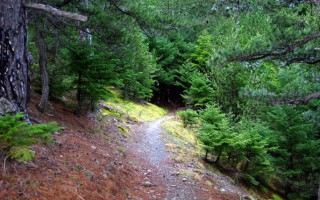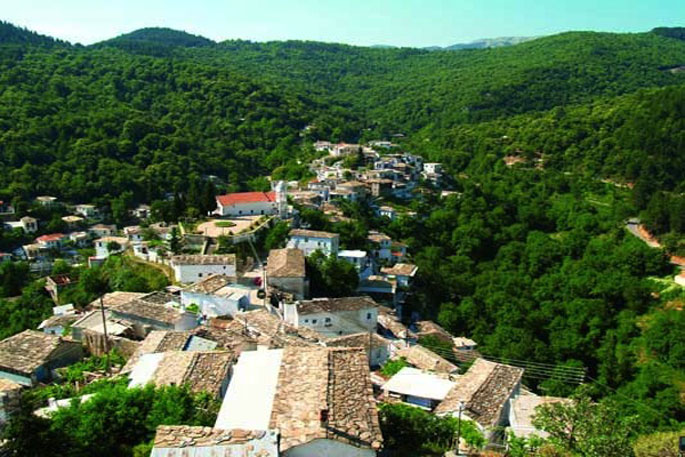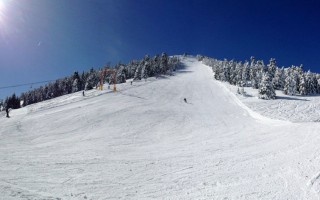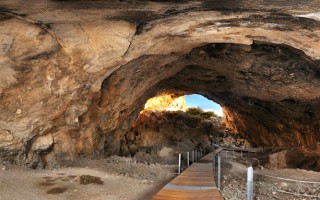“The Routes of the Olive Tree” is a cultural, nonprofit, nongovernmental organization based in Kalamata. Its activities began in 1998, with the aim of promoting the culture of the olive through a series of activities and collaborations.
The starting point was ancient Pylos; not a random choice, given that the area abounds with testimonies regarding the presence of the olive in Greece since ancient times. The one responsible for this initiative was the President of the Chamber of Messinia George Karabatos, with the support of many others who share an affinity for the olive and for motorcycles. This initiative of theirs managed to bring the Mediterranean countries together into a single network, where the common denominator was the cultivation of the olive as well as an interest in its diffusion.Since then, the Routes of the Olive Tree have organized many events and have secured a plethora of international distinctions, such that of the “International Cultural Itinerary” by UNESCO in 2003 and the “Great European Cultural Itinerary” by the European Council in 2006.
Source: www.mythicalpeloponnese.gr
Every October the village of Kastanitsa, Arcadia, organizes the famous Chestnut Festival, which aims to bring out this product, with its great nutritional value and multiple commercial capabilities.The custom of celebrating the chestnut began in 1983 and has been taking place every year since then. The celebrations include, of course, the preparation and tasting of dishes based on the chestnut, and also traditional dancing, various exhibitions and informative talks regarding the chestnut, as well as a variety of topics of environmental nature. Those who are in the area in October must definitely make a stopover in Kastanitsa to experience the unique Chestnut Festival.
The Naturalist Association of the Natives of Kastanitsa, in collaboration with the Management Body of Mount Parnon and Moustos Wetland, organize the famous Chestnut Festival, with the aim to highlight the importance of this beloved crop in the agricultural and financial development of the wider area and also to promote this beautiful Tsakonian village, inviting more people to visit it.
The Chestnut Festival was organized for the first time in 1983 by the Kastanitsa Association and has been taking place every year since then. The visitors have the opportunity to taste traditional, mainly chestnut-based dishes and desserts – prepared both by professional chefs and the village’s women – accompanied by drinks and traditional music. There are also cooking and confectionery contests, again based on the chestnut, and also traditional dancing and various exhibitions, such as painting and photography.
The Festival is also a great opportunity for the visitors to get to know mount Parnon and its ecosystem better, through informative talks and excursions; they will also get to know the wider area of Tsakonia, with its special customs. It has been estimated that during the Chestnut Festival thousands of visitors flock to the area, providing a significant financial boost.
Source: www.mythicalpeloponnese.gr
If you happen to be in Leonidio for Easter, you will witness a truly amazing spectacle, which takes place on the night of the Resurrection. Hundreds of hot-air balloons, made of straw and paper, are set free into the sky when the congregation say “Christ is risen”, filling the night with lights and colours. The origins of this custom, which is not followed anywhere else in Greece, are unknown. Some argue that it is an Asian tradition, which seamen brought back home to Leonidio at the end of the 19th century.
The residents of Leonidio have one more reason to prepare for Easter a little earlier than usual. Every year, on the night of the Resurrection, they revive the tradition of the hot-air balloons, which are set free into the sky when the priest says “the Christ is risen”.
The balloons are made of straw and paper, and they include a special mechanism that allows them to be lifted into the sky. There is an opening on their lower part, inside of which they secure a piece of cloth dipped in oil and petroleum -the so-called “kolymmara”- which, once set on fire, heats the balloon and makes it take off. The balloons’ paper is light, and people use various colours of glue, in order to give the balloons a happy and vibrant effect. The balloons can be as large as two metres and they fly as high as 1,000 metres! When the fire goes out, they cool off and fall back down to earth.
So, few weeks before Easter, each family makes its own balloon, a ritual that every family member is involved in. There is also friendly competition over who will create the most impressive balloon. All five parishes of Leonidio participate in the custom, each one creating up to 100 balloons for that night! The sky is literally filled with these colourful and bright structures, creating a festive ambiance, which is of course accompanied with the fireworks and firecrackers. A few of the hot-air balloons are also freed in the sky in the afternoon, during the Liturgy of Love, from the main square in Leonidio.
The Night of the Balloons is a unique tradition, the origins of which are somewhat lost in the mists of time. This custom doesn’t exist anywhere else in Greece, which means that it’s well worth spending your Easter in Leonidio in order to experience this amazing view from up close.
Source: www.mythicalpeloponnese.gr
Every summer, the municipality of Gortynia organizes a series of cultural and athletic events. Within the framework of these summer events, they organize the annual Panhellenic Folk Song Contest in the village of Agia Paraskevi in Lagkadia, aiming to preserve and promote the local traditions, through their most important means of expression: folk music.
This tradition has taken place for 40 consecutive years and is open to amateur singers and musicians, who specialize in folk music, and especially in the old, rare and unreleased songs. Participants compete in the following three categories: 1) Best folk song interpretation by young people up to 18 years old, 2) Best folk song interpretation by adults and 3) Best performance with a traditional musical instrument.
The 39th contest in 2012 was dedicated to the late Domna Samiou, as a tribute to her contribution to Greek folk music.
Source: www.mythicalpeloponnese.gr
The Festival of Tsakonia took place for the first time during the summer of 2011 in Leonidi, in the prefecture of Arcadia, under the auspices of the municipality of South Kynouria. Also known as “Melijazz”, it combines the unique culinary traditions of Tsakonia with musical sounds from around the Mediterranean. Aubergine is the star of the local cuisine and is used in various recipes, creating unprecedented taste sensations. Jazz, ethnic and Latin music complement the festive ambiance in the traditional, picturesque settlement of Leonidi, together with a broad Greek music repertoire. Mediterranean flavours, singing and dancing are all combined in this unique festival, which is not to be missed!
Source: www.mythicalpeloponnese.gr
Every August, hundreds of people visit the picturesque and traditional settlement of Karytaina on the occasion of the bazaar which is annually organized by the local women’s association. This bazaar usually lasts for 3 days and gives the women of Karytaina the opportunity to present various traditional products, like weavings, embroideries, as well as food and pastries, all handmade with love and care. The association also has a store in the centre of the village, which is open throughout the year and sells handmade products of exceptional quality.
Source: www.mythicalpeloponnese.gr
Every year since 1995, the “Epidaurus Festival” is organized, offering the visitor the opportunity to watch various performances at the imposing ancient theater of Epidaurus. So if you love ancient drama, you must visit this picturesque theater especially on a cool Friday or Saturday night under the moonlight. While it gets dark, you will be able to enjoy the amazing lyrics of the ancient dramatists played by the best and most talented actors.
Source: www.mythicalpeloponnese.gr
During the beautiful, magical nights in end June every little romantic corner of Nafplion is filled with beautiful sounds and melodies coming from the “Naflpion Festival”. Come and join us in this unforgettable musical journey.
Source: www.mythicalpeloponnese.gr
On the hill of Hermione, you can celebrate in a unique way the beginning of Lent with the famous “Fishermen’s Festival”. Here you will find sea food and various fasting delicacies, accompanied by local sweet wine in a folklore celebration.
Source: www.mythicalpeloponnese.gr
At Kilada village in the Municipality of Hermione, the “Fishermen’s Festival” in mid-August has been organized for decades. Come and try fresh fish and sea food fished by the local experts in fishing and revel in a celebration with music until dawn. The well-organized event along with the hospitable inhabitants will be the reason for you to come to Kilada every August!
Source: www.mythicalpeloponnese.gr




























